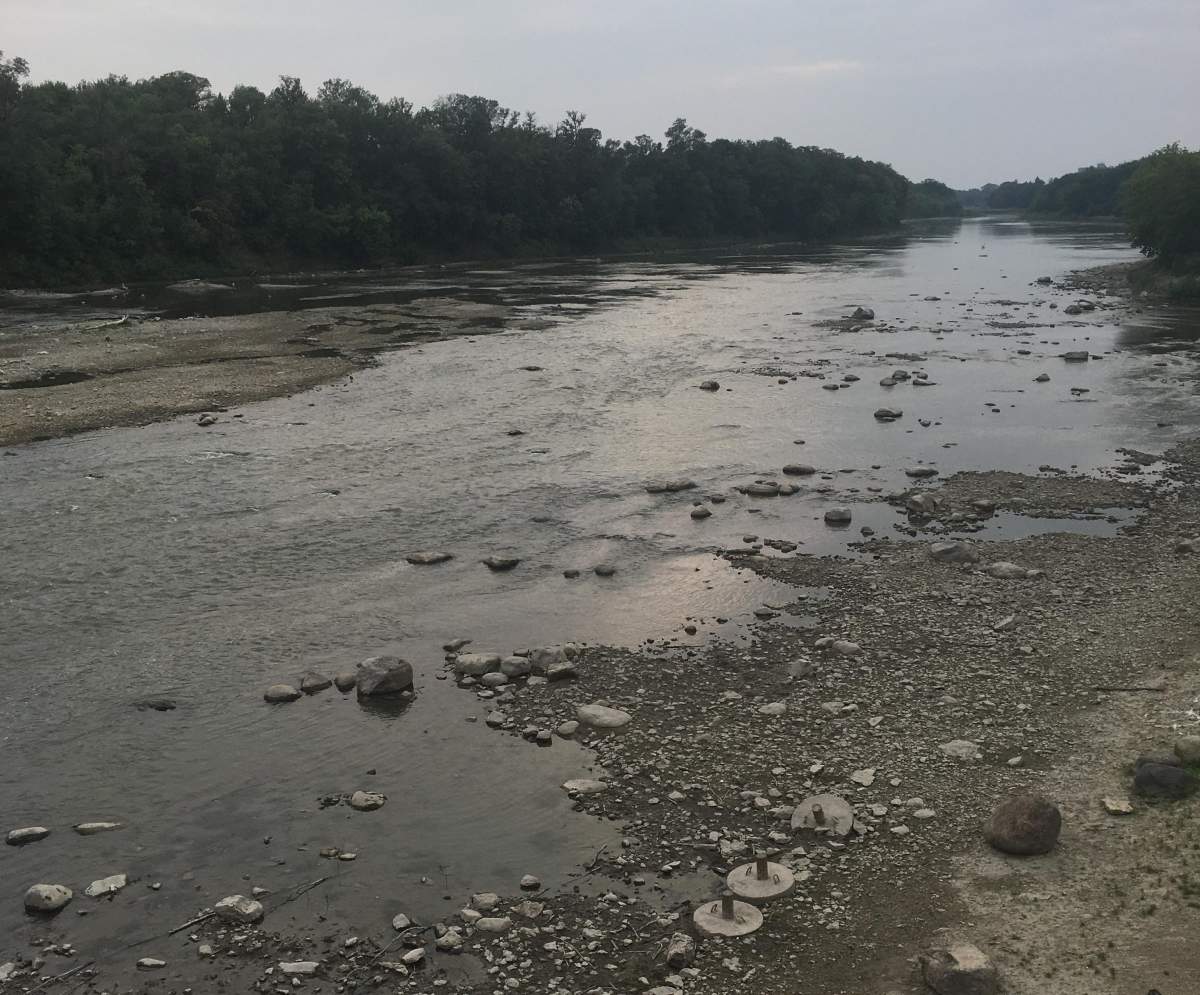A series of storms moved through the Keystone Province Monday and Manitobans rejoiced as thirsty fields soaked up the moisture.

It was still too little, too late.
Coming off the driest July on record, and with three exceptionally dry years during the past five, there’s no hope of salvaging a harvest in some areas of Manitoba this year.
Meanwhile, northern communities had to flee massive wildfires once again, cattle farms that have been around for generations have sold their entire herds due to lack of food, and Winnipeggers stare in disbelief at the Assiniboine River, which usually floods, but is currently at a level low enough in some parts to more rightly call it a a stream.
The Red River is suffering similar problems.
Greg Archibald, CEO of the Pembina Valley Water Cooperative, told 680 CJOB the flow of the Red continues to fall to a distressing level, pointing to the fact the water intake at the Letellier plant is now above the water line in the river.
“From mid-June to mid-July, it went down by 50 per cent, the flow in the river, from 1530 cubic feet to about 750,” said Archibald.
“Then from July 25 on to now, it’s down by about another 50 per cent — less than 380 cubic feet per second.”
Archibald said the co-op has had to bring in portable equipment — which has been working, but may not much longer if the river level keeps dropping.
“The flows are going down but the issue for us is that the level of the water is going down, and that’s causing some real operational issues for us with our water treatment plants on the Red River.”

Get daily National news
Not-so-wetlands
Over at Oak Hammock Marsh, things are stable for now, said Paula Grieef, the marsh’s resident naturalist.
However, the same can’t be said for wetlands across the province, she added, with numerous ponds completely drying up.
This, in turn, impacts local wildlife.
“If you rely on water, if you’re a duck, if you’re a heron or that kind of bird, you need wetlands … your food is harder to find,” Grieef said.
“There’s not been a lot of ducklings around. That’s probably a response to drought.”
Other animals such as beaver and muskrat are either “hunkering down” or “waddling somewhere else,” she added.
Over at Fort Whyte, the nature preserve has resorted to pumping in water for their herd of buffalo, said spokesperson Katrina Forese, although other wildlife are hanging in there.
“Certainly we are seeing the effects of climate change already here in Manitoba,” she said.
“And something like a major drought with a lot of high-temperature days really does kind of drive the point home. This is what the climate change models are predicting for us here in Manitoba.”
Code Red
On Monday, the UN called climate change a “Code red for humanity” and warned it is spiraling out of control.
Already, greenhouse gas levels in the atmosphere are high enough to guarantee climate disruption for decades if not centuries, the report from the scientists of the Intergovernmental Panel on Climate Change (IPCC) warned.
In other words, the deadly heat waves, gargantuan hurricanes and other weather extremes that are already happening will only become more severe.
In an unheard of announcement for August, local ski hill Holiday Mountain announced they will not open this winter due to lack of moisture, which will effect their ability to make snow.
Curt Hull of Climate Change Connection says the dry areas getting dryer and the wet areas getting wetter is a significant indicator of climate change.
“The length of time between records is getting shorter,” he added.

“So even though we had records that we’re breaking now that were broken previously in the 1930s or something like that, we’re now breaking records that are now only two or three years old.”
In Manitoba’s case, its a drought that is unprecedented for the records we have for this part of the world at the moment, said Hull.
In the future, it will likely be unprecedented flooding for Manitoba as events become more extreme.
“The problem with climate change is, is it such a big, global problem that it’s difficult to really wrap your mind around, and it’s also fairly slow moving from a human perspective.
“But in terms of humans, we have to see something right in front of us in order to be aware of it, in order to react to it. That’s one of the biggest challenges of reacting to climate change.”
— with files from Reuters














Comments